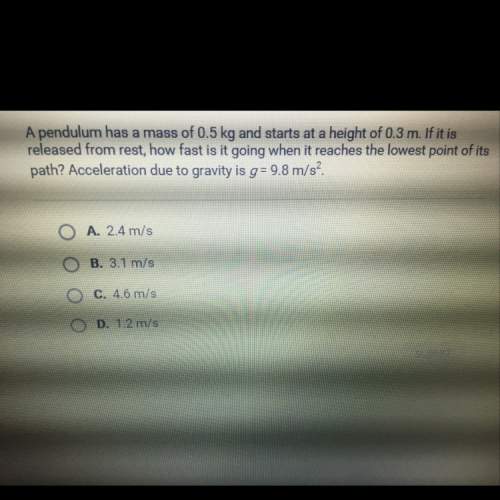
Physics, 09.08.2019 06:10 daedae11142
(a) an electron and a 0.0440-kilogram bullet each have a velocity of magnitude 510m/s, accurate to within 0.0100%. within what lower limit could we determine the position of each object along the direction of the velocity? (b) what if? within what lower limit could we determine the position of each object along the direction of the velocity if the electron and the bullet were both relativistic, traveling at 0.300c measured with the same accuracy? (give the lower limit for the electron in nm and that for the bullet in m.)

Answers: 3


Another question on Physics

Physics, 22.06.2019 07:30
Carbon-14 is a radioactive element that undergoes beta decay. which force is responsible for allowing carbon-14 to become stable? electromagnetic gravitational weak nuclear strong nuclear
Answers: 2


Physics, 22.06.2019 13:30
If the spring constant k of a pogo stick is 3500 n m and the weight of the person on the pogo stick is 700 n, how much is the spring in the botom of the pogo stick compressed?
Answers: 2

Physics, 22.06.2019 15:00
Astudent throws a water balloon with speed v0 from a height h = 1.76 m at an angle θ = 21° above the horizontal toward a target on the ground. the target is located a horizontal distance d = 9.5 m from the student’s feet. assume that the balloon moves without air resistance. use a cartesian coordinate system with the origin at the balloon's initial position. (a) what is the position vector, rtarge t, that originates from the balloon's original position and terminates at the target? put this in terms of h and d, and represent it as a vector using i and j. (b) in terms of the variables in the problem, determine the time, t, after the launch it takes the balloon to reach the target. your answer should not include h. (c) create an expression for the balloon's vertical position as a function of time, y(t), in terms of t, vo, g, and θ. (d) determine the magnitude of the balloon's initial velocity, v0, in meters per second, by eliminating t from the previous two expressions.
Answers: 3
You know the right answer?
(a) an electron and a 0.0440-kilogram bullet each have a velocity of magnitude 510m/s, accurate to w...
Questions









Mathematics, 28.09.2021 20:50


English, 28.09.2021 20:50


Physics, 28.09.2021 20:50




Mathematics, 28.09.2021 20:50

Business, 28.09.2021 20:50





